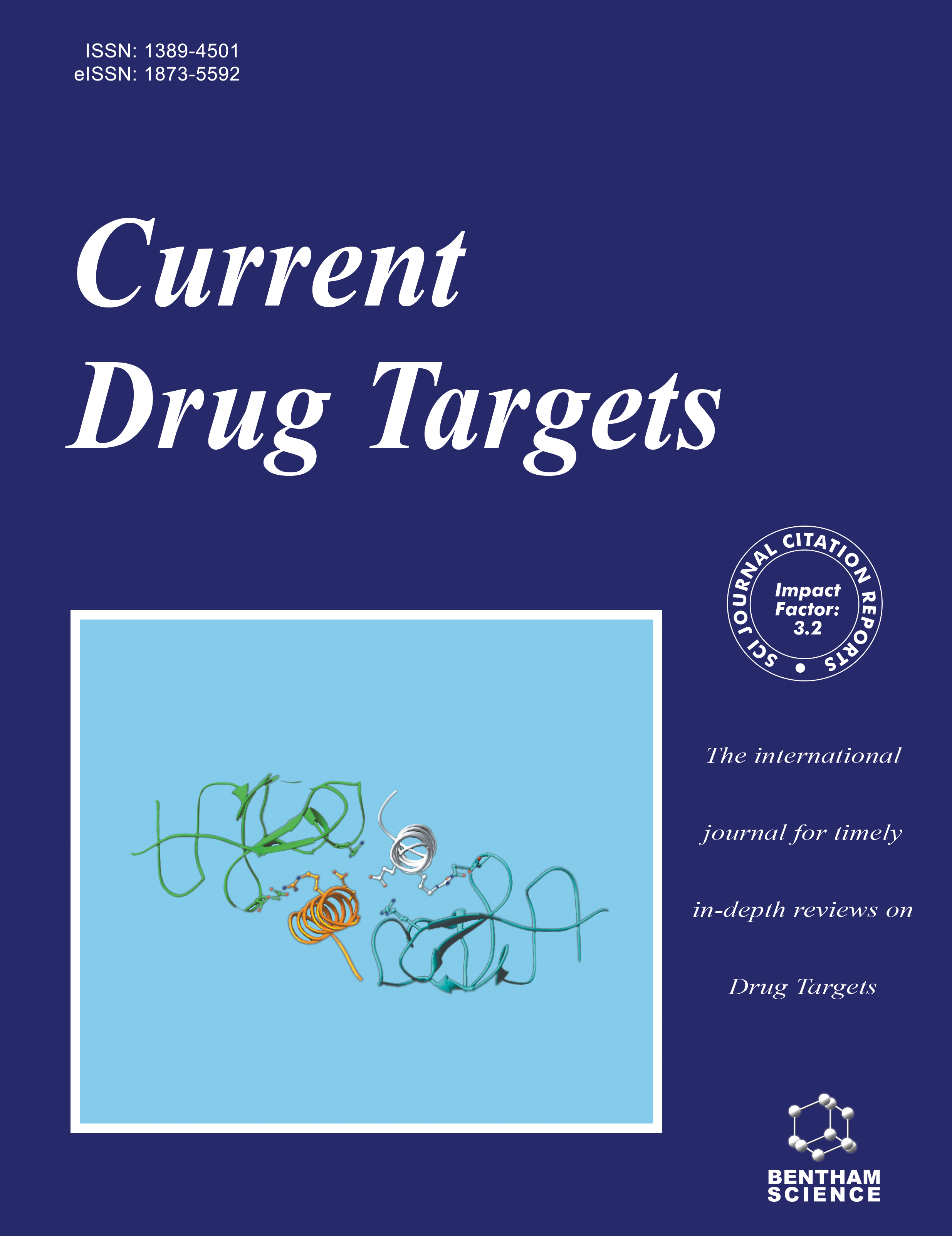- Home
- A-Z Publications
- Current Drug Targets
- Previous Issues
- Volume 21, Issue 6, 2020
Current Drug Targets - Volume 21, Issue 6, 2020
Volume 21, Issue 6, 2020
-
-
Understanding the Pharmaceutical Aspects of Dendrimers for the Delivery of Anticancer Drugs
More LessDendrimers are emerging class of nanoparticles used in targeted drug delivery systems. These are radially symmetric molecules with well-defined, homogeneous, and monodisperse structures. Due to the nano size, they can easily cross the biological membrane and increase bioavailability. The surface functionalization facilitates targeting of the particular site of action, assists the high drug loading and improves the therapeutic e Read More
-
-
-
Targeting Strategies in Therapeutic Applications of Toxoplasmosis: Recent Advances in Liposomal Vaccine Delivery Systems
More LessAuthors: Yaghob Azadi, Ehsan Ahmadpour and Amirhossein AhmadiToxoplasma gondii is a prevalent parasitic pathogen that infected over one-third of the global population. Toxoplasmosis is diagnosed by isolating the parasite and detecting host antibodies. In contrast, the main problem with diagnosis relates to the sensitivity and specificity of the tests. Currently, treatment with pyrimethamine and sulfadiazine is recommended, despite their side effects and toxicity to humans. Moreover, Read More
-
-
-
Cardiovascular Modulating Effects of Magnolol and Honokiol, Two Polyphenolic Compounds from Traditional Chinese Medicine-Magnolia Officinalis
More LessAuthors: Yuan Yuan, Xiaocui Zhou, Yuanyuan Wang, Yan Wang, Xiangyan Teng and Shuaiyu WangHonokiol and its isomer magnolol are poly-phenolic compounds isolated from the Magnolia officinalis that exert cardiovascular modulating effects via a variety of mechanisms. They are used as blood-quickening and stasis-dispelling agents in Traditional Chinese Medicine and confirmed to have therapeutic potential in atherosclerosis, thrombosis, hypertension, and cardiac hypertrophy. This comprehensive review summarizes the Read More
-
-
-
Growth Factors as Tools in Photoreceptor Cell Regeneration and Vision Recovery
More LessAuthors: Fatemeh Forouzanfar, Mana Shojapour, Zahra S. Aghili and Samira AsgharzadePhotoreceptor loss is a major cause of blindness around the world. Stem cell therapy offers a new strategy in retina degenerative disease. Retinal progenitors can be derived from embryonic stem cells (ESC) in vitro, but cannot be processed to a mature state. In addition, the adult recipient retina presents a very different environment than the photoreceptor precursor donor. It seems that modulation of the recipient environ Read More
-
-
-
Inflammation as a Therapeutic Target for Various Deadly Disorders: A Review
More LessAuthors: Ashwani K. Dhingra and Bhawna ChopraInflammation is the multifaceted biological response of vascular tissues against injurious stimuli such as pathogens, irritants or infection. However, when inflammation goes away, it leads to produce quite serious life-threatening diseases like Alzheimer's, rheumatoid arthritis, heart attacks, colon cancer, etc. Therefore, inflammation suddenly has become one of the hottest areas of medical research. The present review article is ai Read More
-
-
-
CD28: A New Drug Target for Immune Disease
More LessAuthors: Sijing Xia, Qin Chen and Bing NiuBackground: CD28, a cell surface glycoprotein receptor, predominantly expressed on activated T cells, belongs to the Ig superfamily and provides a critical co-stimulatory signal. CTLA-4 has sequence homology to CD28, and is expressed on T cells after activation. It provides an inhibition signal coordinated with CD28 to regulate T cell activation. Both of them regulate T cell proliferation and differentiation and play an important r Read More
-
-
-
Natural Aldose Reductase Inhibitor: A Potential Therapeutic Agent for Non-alcoholic Fatty Liver Disease
More LessAuthors: Longxin Qiu and Chang GuoAldose reductase (AR) has been reported to be involved in the development of nonalcoholic fatty liver disease (NAFLD). Hepatic AR is induced under hyperglycemia condition and converts excess glucose to lipogenic fructose, which contributes in part to the accumulation of fat in the liver cells of diabetes rodents. In addition, the hyperglycemia-induced AR or nutrition-induced AR causes suppression of the transcriptional activity of Read More
-
-
-
Novel Treatment for the Most Resistant Schizophrenia: Dual Activation of NMDA Receptor and Antioxidant
More LessAuthors: Chieh-Hsin Lin, Yu-Ming Chen and Hsien-Yuan LaneClozapine has been regarded as the last-line antipsychotic agent for patients with refractory schizophrenia. However, many patients remain unresponsive to clozapine, referred to as “clozapineresistant”, “ultra-treatment-resistant”, or remain in incurable state. There has been no convincing evidence for augmentation on clozapine so far. Novel treatments including numerous N-methyl-Daspartate (NMDA) receptor Read More
-
-
-
Molecular Mechanisms Involved in the Antitumor Activity of Isolated Lectins from Marine Organisms: A Systematic Review
More LessIntroduction: Tumor cells may present several molecular alterations that favor their malignancy, among which there is the expression of tumor-related antigens, such as truncated T-glycans, Thomsen-nouvelle, sialyl-Lewis X and sialyl Tn, which may help in the diagnosis and treatment using specific target molecules. Lectins are ubiquitous proteins capable of interacting with specific carbohydrates. Lectins isolated from marin Read More
-
Volumes & issues
-
Volume 26 (2025)
-
Volume 25 (2024)
-
Volume 24 (2023)
-
Volume 23 (2022)
-
Volume 22 (2021)
-
Volume 21 (2020)
-
Volume 20 (2019)
-
Volume 19 (2018)
-
Volume 18 (2017)
-
Volume 17 (2016)
-
Volume 16 (2015)
-
Volume 15 (2014)
-
Volume 14 (2013)
-
Volume 13 (2012)
-
Volume 12 (2011)
-
Volume 11 (2010)
-
Volume 10 (2009)
-
Volume 9 (2008)
-
Volume 8 (2007)
-
Volume 7 (2006)
-
Volume 6 (2005)
-
Volume 5 (2004)
-
Volume 4 (2003)
-
Volume 3 (2002)
-
Volume 2 (2001)
-
Volume 1 (2000)
Most Read This Month
Article
content/journals/cdt
Journal
10
5
false
en


